Preventing Heat Stress at Work: Your Guide to Heat Stress Risks & Solutions

Weather patterns are changing. The planet’s getting warmer. Since the 1980s, each decade has been hotter than the last—with the warmest seven years on record all occurring since 2015. In the United States, the CDC reports that over 700 deaths and 67,000 emergency room visits are caused by excessive heat in the United States every year.
In 2019, 43 of those deaths occurred on the job. But even when heat stress isn’t fatal, it’s still cause for great concern on the jobsite—including injury, productivity loss and property damage. To best protect your crew against the rising risk, it’s critical to better understand the illness, warning signs and solutions for mitigating it.
WHAT IS HEAT STRESS?
Heat stress occurs when the body’s means of controlling its internal temperature starts to fail. Once the body’s temperature reaches 99.7° F (37.6° C), heat stress has begun to affect the body. At 104° F (40° C), it becomes susceptible to severe damage. As little as 30 minutes of 104° temps can cause cellular damage to the brain or even death.
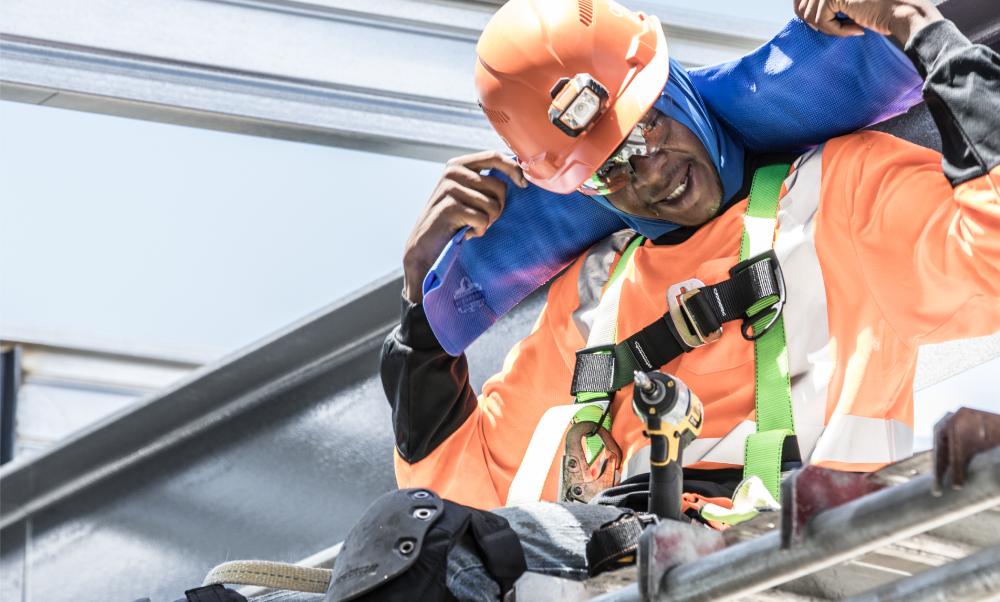
Two factors contribute to how heat stress affects the body: personal and environmental. Some workers are at greater risk before they ever step foot in the heat due to personal factors: being older or overweight, having heart disease, high blood pressure or taking medications that act as diuretics and do not react well to extreme heat.
The second contributing factor is environmental, and accounts for anything that impacts the body externally: high temperatures, direct sunlight, humidity, limited air movement, hot equipment, reflected heat from the ground, water or objects and clothing/PPE choices—chief among them.
WHO IS MOST AT RISK FOR HEAT STRESS?
Taking the brunt of the burn in all of this is construction workers, which makes sense when you consider their exposure to unpredictable outdoor temperatures. But heat stress doesn’t discriminate, putting workers at risk both indoors and out. The following is a list of other high-risk industries that have actively participated in OSHA’s Heat Illness Prevention Campaign to educate employers and crews on the dangers of working in the heat:
- Outdoor: Construction, logging, landscaping, agriculture, postal/delivery, fisheries, wildland firefighting, maritime, utilities, railroads, EMTs, oil & gas, sanitation
- Indoor: Warehousing, food processing, foundries, manufacturing, mills, automotive
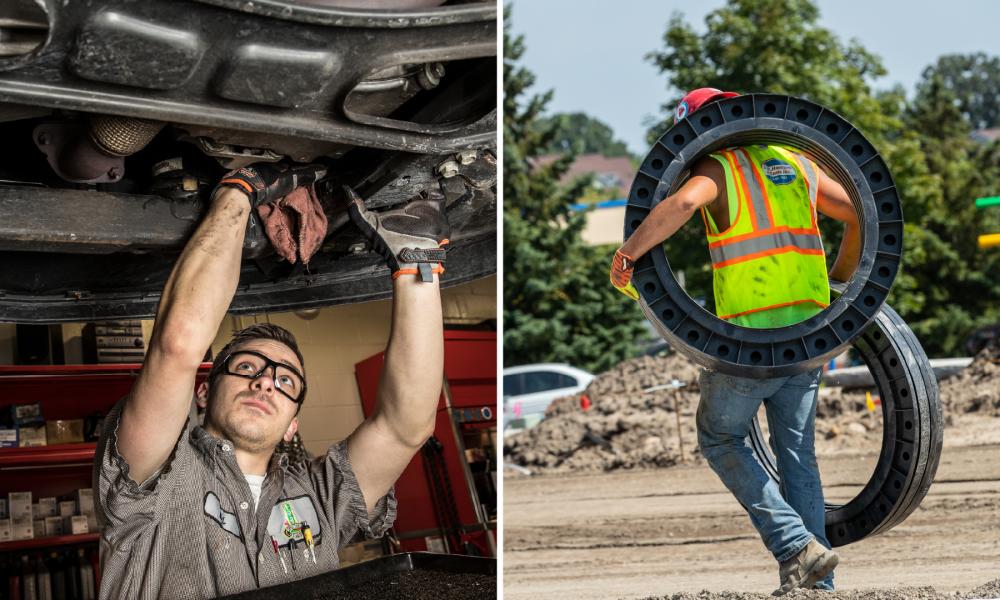
MOST COMMON HEAT-RELATED ILLNESSES (HRIs)
Heat rash, heat cramps, heat exhaustion and heat stroke are the four most common HRIs. Here’s a quick look at how to identify and treat them (for a deeper—and downloadable—dive you can easily share with crews, check out our HRIs Toolbox Talk).
HEAT RASH
- How it happens: Occurs when sweat ducts become clogged and sweat can’t get to the surface of the skin
- Symptoms: Red blister-like eruptions, bumps and an itching sensation
- How to treat it: Keep the skin dry and rest in a cool place
HEAT CRAMPS
- How it happens: Salt and moisture levels are depleted through excessive perspiration
- Symptoms: Painful spasms usually in the legs or abdomen
- How to treat it: Move to a cool, shaded area, apply something cool, drink plenty of fluids (consider electrolyte solutions
HEAT EXHAUSTION
- How it happens: Prolonged exposure to high temps and inadequate hydration causing body temps to rise
- Symptoms: Headaches, weakness, mood change, feeling sick, pale and/or clammy skin
- How to treat it: Move to a cool, shaded area, apply something cool, drink plenty of fluids and monitor
HEAT STROKE
- How it happens: When the body becomes unable to control its core body temp
- Symptoms: Pale skin, nausea, vomiting, confusion
- How to treat it: Seek medical attention immediately
HEAT STRESS PREVENTION AND SOLUTIONS
You can’t change the weather. But you can change your approach to working in the heat. Proper preventative action involves a mix of engineering, administrative and work practice controls, as well as the use of cooling PPE.
ENGINEERING CONTROLS
The key to Engineering Controls is prevention—finding a way to isolate the workers from the hazard. And when it comes to heat stress, it’s all about having it made in the shade.
Shade: When work must be done in the heat of the day, taking regular breaks and meals under the cover of shelters such as canopies, umbrellas and other temporary structures is important. So important, in fact, that states like Washington and California have regulations that require it. Providing effective jobsite shade may require planning. Shelters should block direct sunlight with a purpose to provide a recovery area with access to fluids. Consider using areas with the natural shade of heavy tree cover or an awning or other temporary structure at the site. Take advantage of extra items like a misting system which can cool your shelter up to 30 degrees Fahrenheit below ambient air. If the structures are air-conditioned, even better! Download Shade Toolbox Talk >>>

ADMINISTRATIVE CONTROLS
Administrative Controls are educational measures and policies intended to support safe worker habits. This includes training supervisors and crews on HRI risk factors and warning signs, implementing emergency procedures and—perhaps most importantly—providing and promoting regular hydration.
Hydration: Heat-related illnesses such as heat rash, heat cramps, heat exhaustion and heat stroke are closely associated with a worker’s hydration level. Since heat stress is a widely recognized hazard, states including California and Washington have established specific workplace drinking water requirements. OSHA standards for both general industry and construction activities mandate that adequate drinking water be available to workers at all jobsites. Dehydration risks are more commonly recognized for work performed outdoors or in hot indoor environments like foundries, bakeries, boiler rooms and kilns, but they also exist for those toiling away in indoor sites with poor airflow and for workers who wear special, protective clothing such as non-permeable HAZMAT suits. Keeping clean, cool and convenient water accessible to workers can prove to be more challenging than one would think. The use of hydration packs is a good way to not only solve for that challenge but encourage more frequent intake. Because hydration packs make water readily available and hands-free simple, workers can hydrate without having to take a break from the task at hand. Download Dehydration Prevention Toolbox Talk >>>
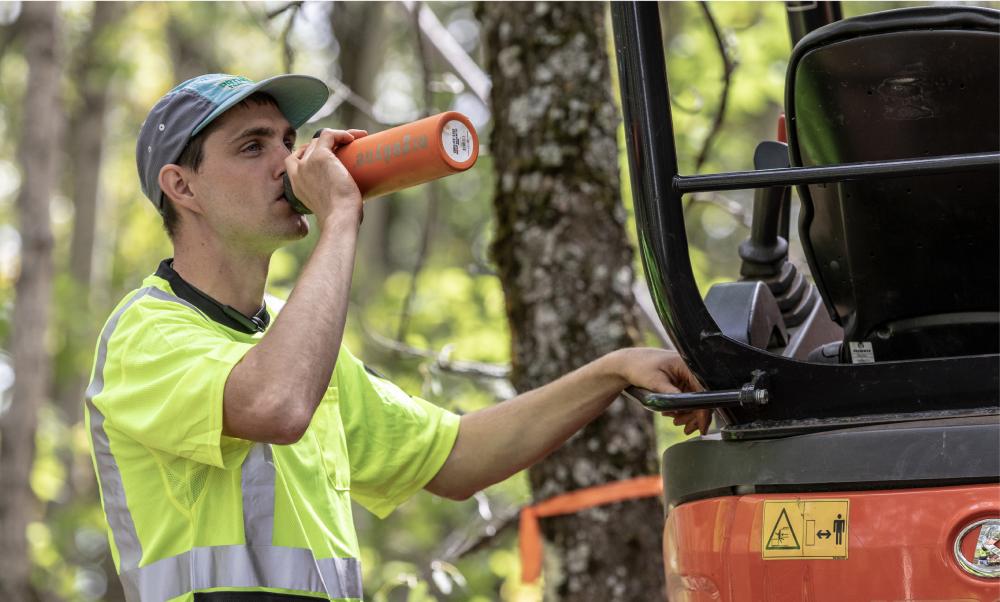
WORK PRACTICE CONTROLS
Work. Rest. Repeat. As temperature and humidity levels rise, it’s crucial that work-rest ratios are adjusted accordingly—and that workers are mandated to actually take those breaks. Smart work scheduling is intended more for prevention than for fixing a problem once it’s too late.
An equally important work practice control is acclimatization. This gradual ramping up of the work schedule for new workers and those in regions prone to unexpected heat waves allows the body to safely adjust to performing at high temperatures for longer amounts of time. Download Work-Rest Ratio Toolbox Talk >>>
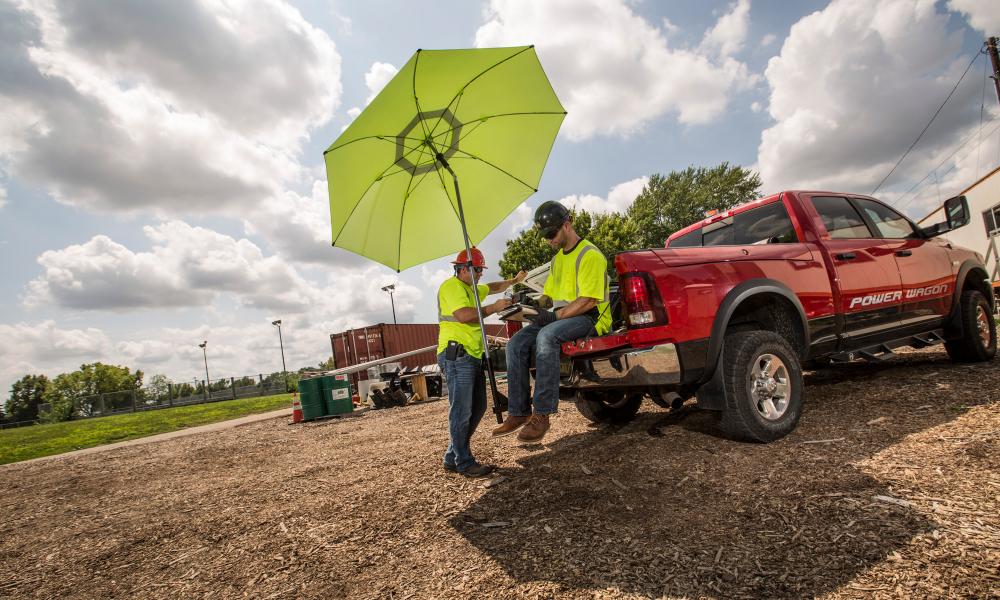
COOLING PPE
More and more, experts are recommending wearable body cooling PPE as a key component to any heat stress prevention program. With a wide variety of technologies and styles available, there’s no shortage of comfortable and convenient options for helping workers keep their cool.
Evaporative Cooling PPE: Evaporative cooling is a simple, effective and relatively inexpensive approach that can be used in outdoor and indoor environments, but works best in drier, low-to-moderately humid conditions with sufficient airflow. The same way sweat cools, evaporative solutions draw heat from workers’ bodies using an external source of water to create an enhanced cooling effect. While any damp rag could provide some relief, controlled evaporation with fabrics that hold moisture for an extended period of time—and products that are just downright comfortable to wear—provide significantly more effective results.
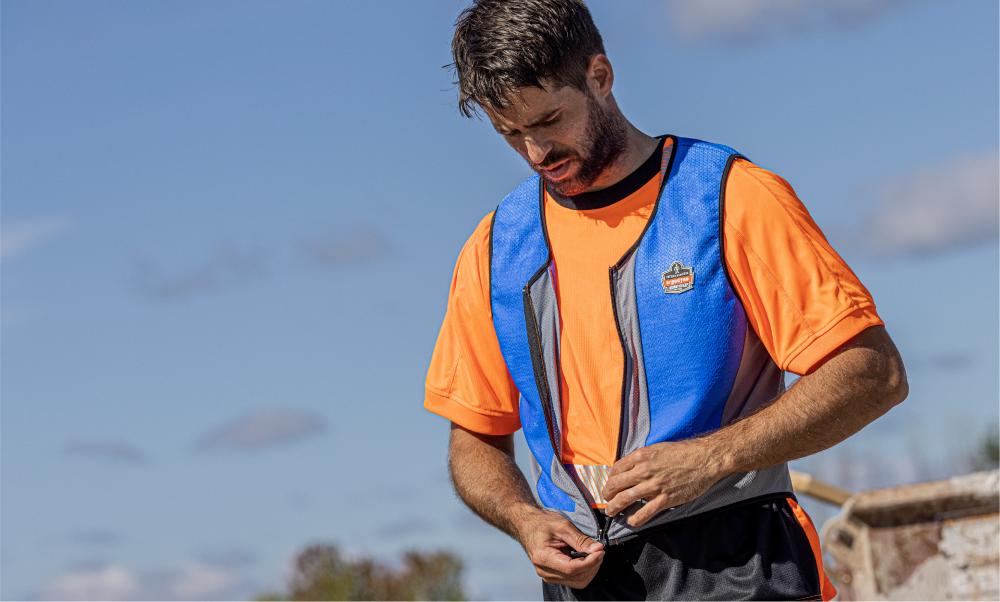
Phase Change Cooling PPE: Unlike evaporative cooling technology, airflow is not required for phase change cooling—making it a prime choice for high-heat indoor settings like foundries, glass manufacturing and paper & pulp. Solutions like Phase Change Cooling Vests use a cooling charge pack that pulls heat away from the body (heat energy always moves from a warmer place to a cooler place). These packs contain liquids like non-toxic phase change material that solidify typically between 55° F (13° C) and 64° F (18° C) but, unlike conventional ice or gel freezer packs, phase change packs aren’t frosty to the touch—meaning they’ll remain comfortable against the body and stay cool much longer than ice. As the phase change cooling pack absorbs heat, it begins to change from a solid to a liquid. The cooling effect can last anywhere from an hour-and-a-half to four hours, depending on the solution.
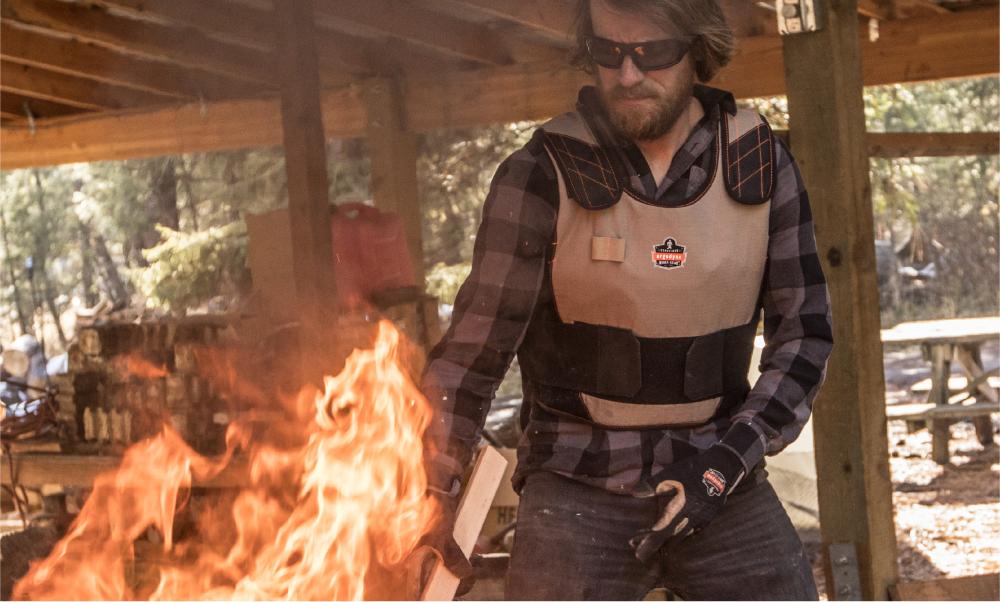
Absorptive Cooling PPE: Sweat happens. And for a very good reason: to regulate body temp. But you know what they say about too much of a good thing. That’s where absorptive technology comes in. A sweaty palm or stinging droplet in the eye isn’t just uncomfortable, it’s a jobsite hazard. Much like evaporative cooling solutions, materials matter when it comes to all-around comfort and performance with absorptive solutions. Again, you could wrap any old rag around your head and call it good, but what starts as a solution can ultimately become a hindrance if it wasn’t designed for that purpose. From old school but super-effective cotton terry sweatbands (think early ‘80s John McEnroe) to dew rags, skull caps, multi-bands and headbands made of high-performance materials that pull sweat away from the body for fast evaporation, absorptive solutions help take the sting out of working in the heat.
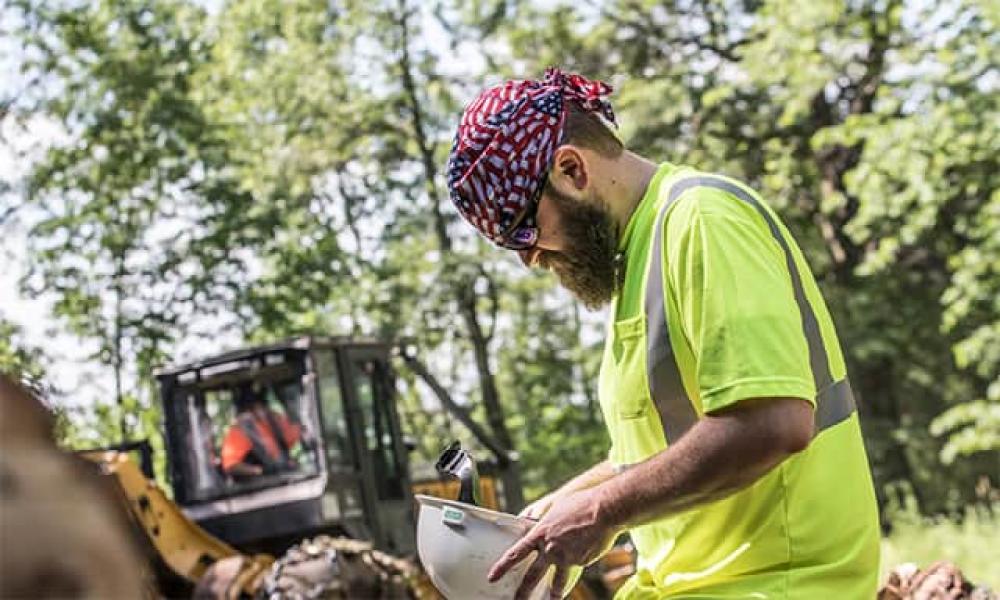
Bonus! Sunscreen: Above skin cancer being the most common form in cancer in the United States, those who work outdoors are 3.5 times more likely to develop it. Turns out Mom wasn’t nagging just to nag—regular application of sunscreen is the easiest and most cost effective way to stop skin cancer in its tracks. For a deeper dive into the risk and solutions, check out our Guide to Skin Damage Prevention.
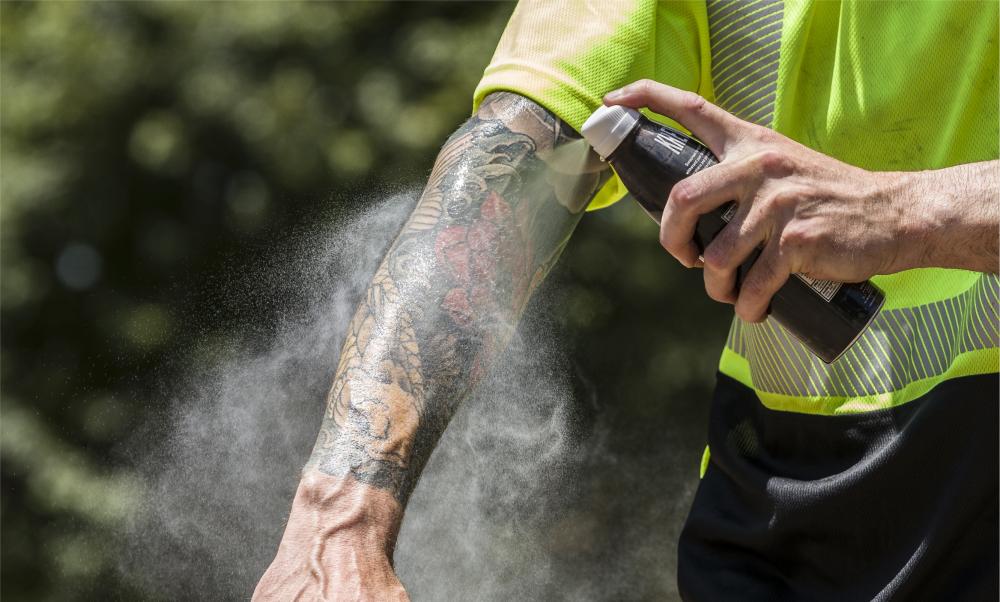
EDUCATION & TRAINING
To review… While you can’t control the weather, you can control how you and your team handle it. From knowing the risk factors and symptoms of heat-related illnesses, ensuring proper hydration and shade and fighting back the heat with the right gear, you can make relatively minor adjustments that have a major impact on your crew’s health, safety and productivity.
Ready to build your own heat stress prevention plan? Get started today by visiting our all-in-one hub for heat stress resources and solutions.

